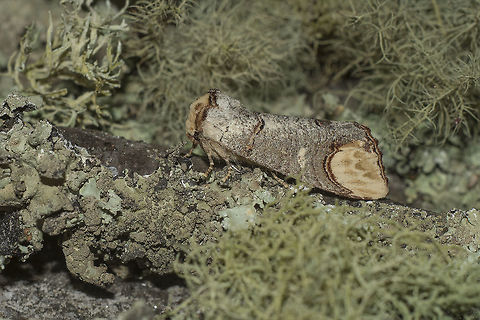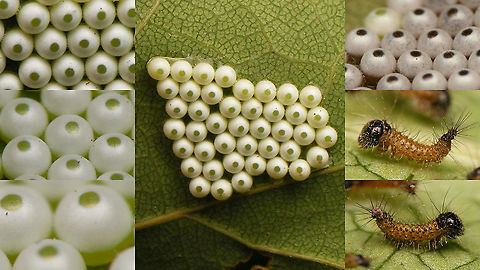
Appearance
This is a fairly large, heavy-bodied species with a wingspan of 55–68 mm. The forewings are grey with a large prominent buff patch at the apex. As the thoracic hair is also buff, the moth resembles a broken twig when at rest. The hindwings are creamy-white. This moth flies at night in June and July and sometimes comes to light, although it is not generally strongly attracted.The young larvae are gregarious, becoming solitary later. The older larva is very striking, black with white and yellow lines. It feeds on many trees and shrubs . The species overwinters as a pupa.
# ^ ''The flight season refers to the British Isles. This may vary in other parts of the range.''

Food
For details see Robinson, G. S., P. R. Ackery, I. J. Kitching, G. W. Beccaloni & L. M. Hernández, 2010.⤷ ''Acer'' - Norway maple
⤷ ''Betula'' - Birch
⤷ ''Corylus'' - Hazel
⤷ ''Laburnum''
⤷ ''Populus'' - Poplar
⤷ ''Prunus''
⤷ ''Quercus'' - Oak
⤷ ''Robinia''
⤷ ''Rosa'' - Rose
⤷ ''Salix'' - Willow
⤷ ''Tilia'' - Lime
⤷ ''Ulmus'' - Elm
⤷ ''Viburnum''
Lime
Independently observed food plant: *"Fagus sylvatica f. purpurea"
Caterpillars had stripped nearly all leaves off a 15 year old copper beech.
References:
Some text fragments are auto parsed from Wikipedia.
